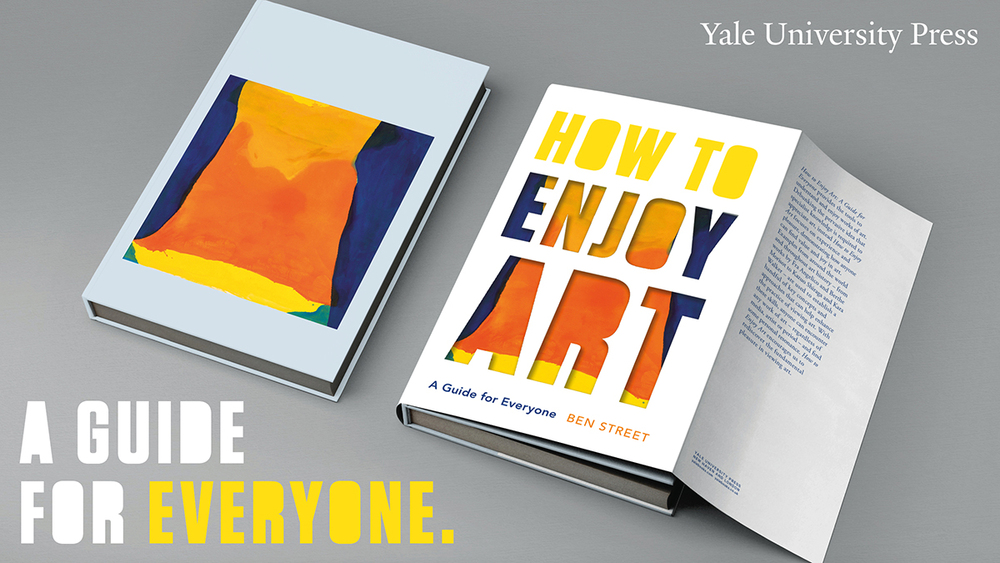
How to Enjoy Art is a book about how to get the most from your encounter with art. That, in fact, might not be an enjoyable experience, despite what the title promises. It could just as easily be an engrossing, enlightening or disturbing one, or one that inspires indifference, laughter or even disgust. The point is that in order to have those experiences, you have to participate in the art encounter. You have to play the game in order to decide for yourself how you feel about it. My intention with this book is to lay out the tools you need to participate. It’s about how to play the game.
Works of art aren’t for everyone, but they should be for anyone. We can’t assume that everyone will get something from any given artwork. But we should assume that absolutely anyone could. This sort of thing sounds utopian when written down in black and white; it’s easy to say that art should be for anyone. But the fact is that many, many people don’t feel that art is for them. There are assumptions around what you need to know; how you need to behave; even the sort of person you’re supposed to be. These assumptions act like barricades between artworks and people whose lives might be enhanced by coming into contact with them. I know this to be the case, because I’ve worked as a museum educator for several large museums for many years. I’ve encountered these assumptions from visitors of all ages and backgrounds; I’ve heard many people say they thought art wasn’t for them. This is a terribly sad situation, not just for the people who might experience the joy and fascination of engaging with works of art, but for the artworks themselves. After all, artworks need audiences just as books need readers, or songs need listeners. It’s how they come to life.
In this book, I’ve tried to be true to those encounters in museums I’ve described. I’ve chosen a number of objects made across a wide span of time and place – from Ancient Egypt to contemporary China – and in a vast range of media – from printmaking to installation, sculpture to photography. I’ve chosen these objects because they fascinate me; they leave me with more questions than answers. You won’t find artists’ biographies, lists of dates or art movements or discussions of how much artworks go for at auction. All of that information is interesting enough in its own right, but all of it happens outside the artwork. This book is about the present tense encounter with the object. What it’s actually like to stand there in front of a work of art you know little about, and using what you bring to the experience to make it a more enjoyable one – so you may start out just knowing an artwork’s title, and end up with your own name for it!
I’m convinced that we all carry with us the things we need to engage with works of art. It’s not that I’m belittling art historical knowledge or understanding – I’m an art historian, and these things matter to me. But what tends to happen is we, as audiences, tend to leap to other people’s analysis of artworks to do our thinking for us, whether that’s the wall label in the museum, the voice of the audio tour or the TV presenter gesticulating wildly in front of a painting. Again, this is not to discredit expertise. But all works of art are made to communicate. And we all have the potential to be part of that communication. This book shows you how.
The Competition
We’re running a competition to give away five copies of How to Enjoy Art and exclusive Yale University Press tote bags. Join us in renaming famous works of art #wronganswersonly!
Whether it’s the Mona Lisa, or The Arnolfini Portrait , we’ve probably all seen a work of art that in our own mind has a very different, perhaps more personal name to its ‘official’ title. If you’d like to enter our competition, tell us your suggestion for renaming a favourite work of art in the #wronganswersonly query style on social media and tag @ReadingAgency and @YaleBooks.
Need some inspiration? Ben’s name for Caravaggio’s The Supper at Emmaus is Splitting the Bill and our suggestion for Magritte’s The Son of Man is Photobombing Fruit.
If you don’t use social media you can email your entry to [email protected] Competition closes on Wednesday 20 October. UK residents only.


